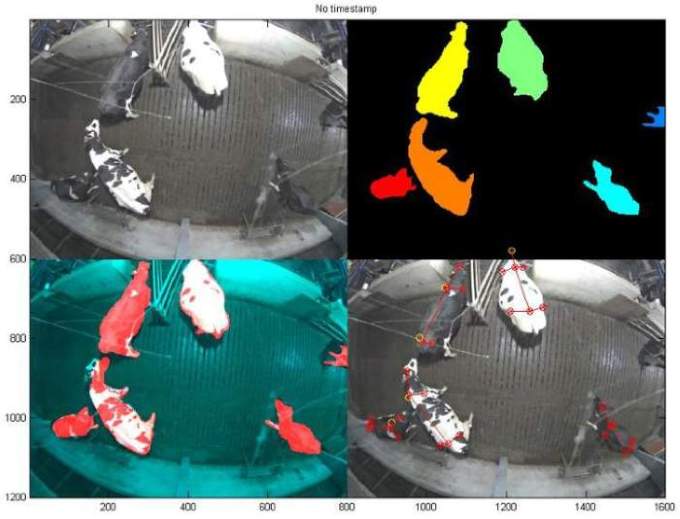Facts:
Project funding by Formas
Projectduration: 2014-2016
Projectleader: Oleksiy Guzhva.
Collaboration: LTH
Continuous surveillance of animal welfare in housed dairy cows using image analysis technology
The project aims to develop image analysis technology in livestock production as a cost effective tool to monitor animal welfare and related performance. Primary focus will be to develop the method, study cow behaviour in relation to cow traffic, locomotion and diseases in automatic milking systems (AMS) by use of image analysis and computer vision technologies.

Part 1.
Adapting image an alysis to the dairy cow environment: Labelling animals in the pictures is essential for the image analysis which will include multi-target tracking, in particular we will construct observation models for phd-filters using background/foreground estimates as observations, as opposed to using detections as input. We will also study unsupervised feature learning techniques for feature extraction for improved livestock recognition and tracking.
Part 2.
Correlating behavioural events with image analysis: Reliable decision making from sensors could be a key functionality within PLF. Thus, training from known data to generalize to live data generally requires sophisticated learning algorithms. For example, consider the task of detection livestock from video, which can be approached by utilizing training data and then using a trained classifier to detect livestock. Various decision-making takes place on both a micro and macro level within PLF. Behaviour studies will be performed to determine and validate the various events.
Part 3.
Analysing cows´ movements, positions and interactions within animals as well as with housing environment and technical equipment and with disease and lameness parameters. Heath records, body condition scoring, lameness scoring bi-weekly, and performance data are collected throughout the study period. Claw and leg diseases are captured in association with claw trimming at the start and end of experiment and if necessary more frequently. All these data are analyzed to find correlations.
Part 4.
Application of results from Part 3 in practice and making interventions with long term follow up. We intend to study the most critical point in the dairy barn with automatic milking, the waiting area outside the milking unit. We will quickly identify and perform actions for cows that for some reason do not go directly into the AMS and are forced to wait or return to feed or resting areas as wells as interrupted milkings. We will test interventions in the design of the animal environment and management routines that can optimize cow traffic, health and welfare.
Project funding by Formas
Projectduration: 2014-2016
Projectleader: Oleksiy Guzhva.
Collaboration: LTH